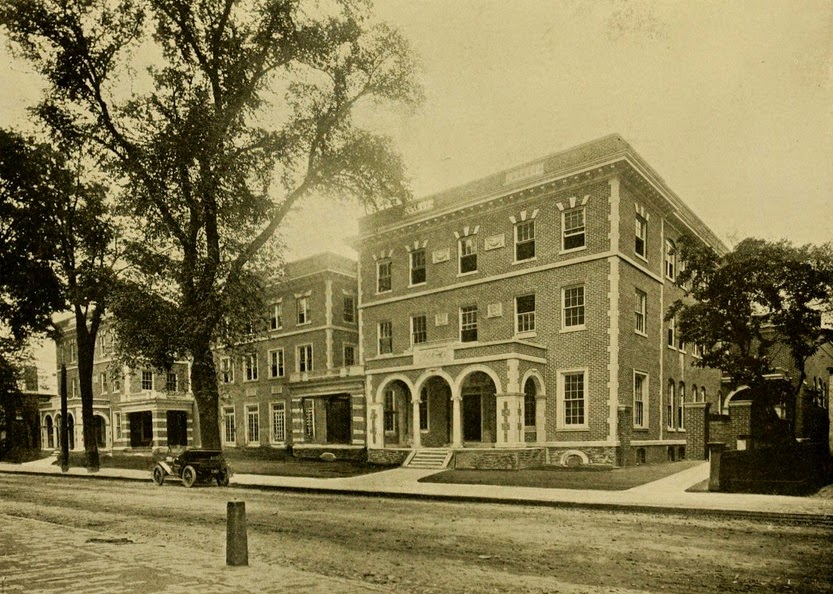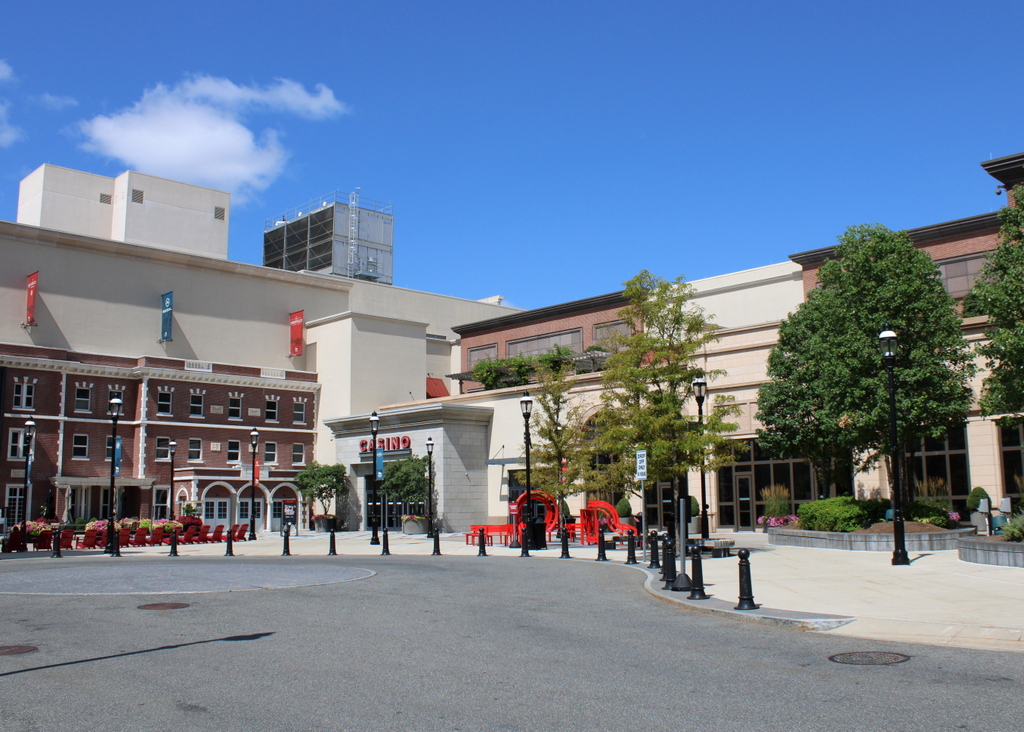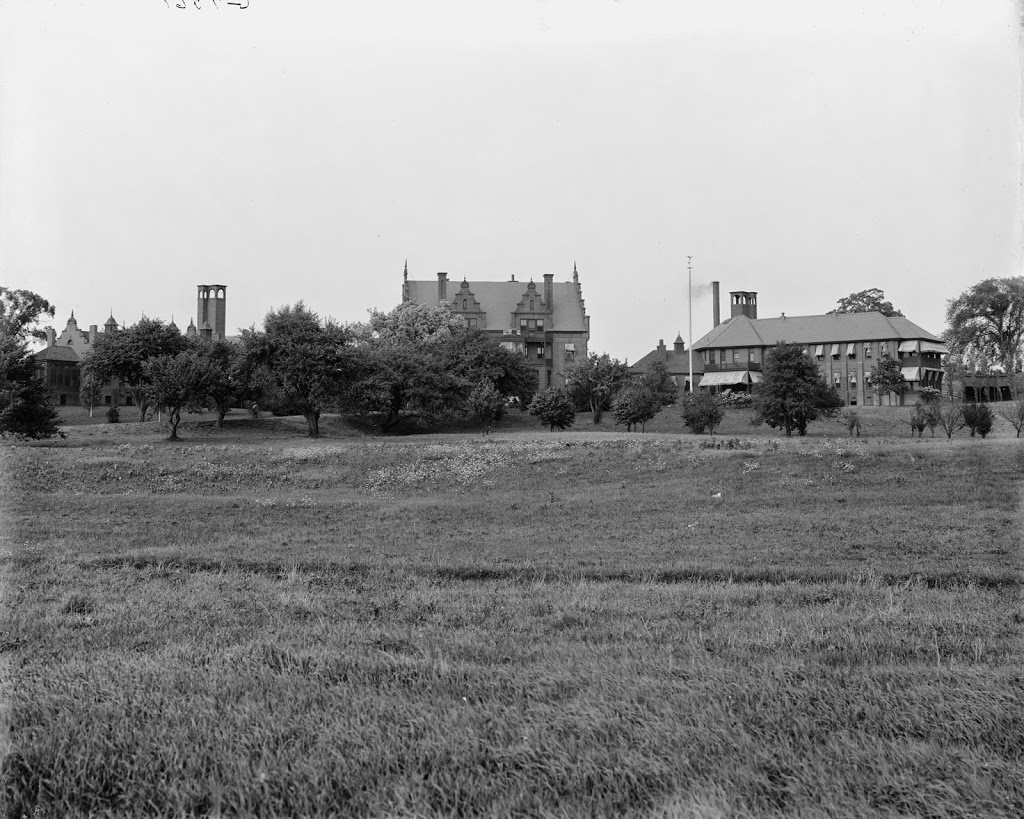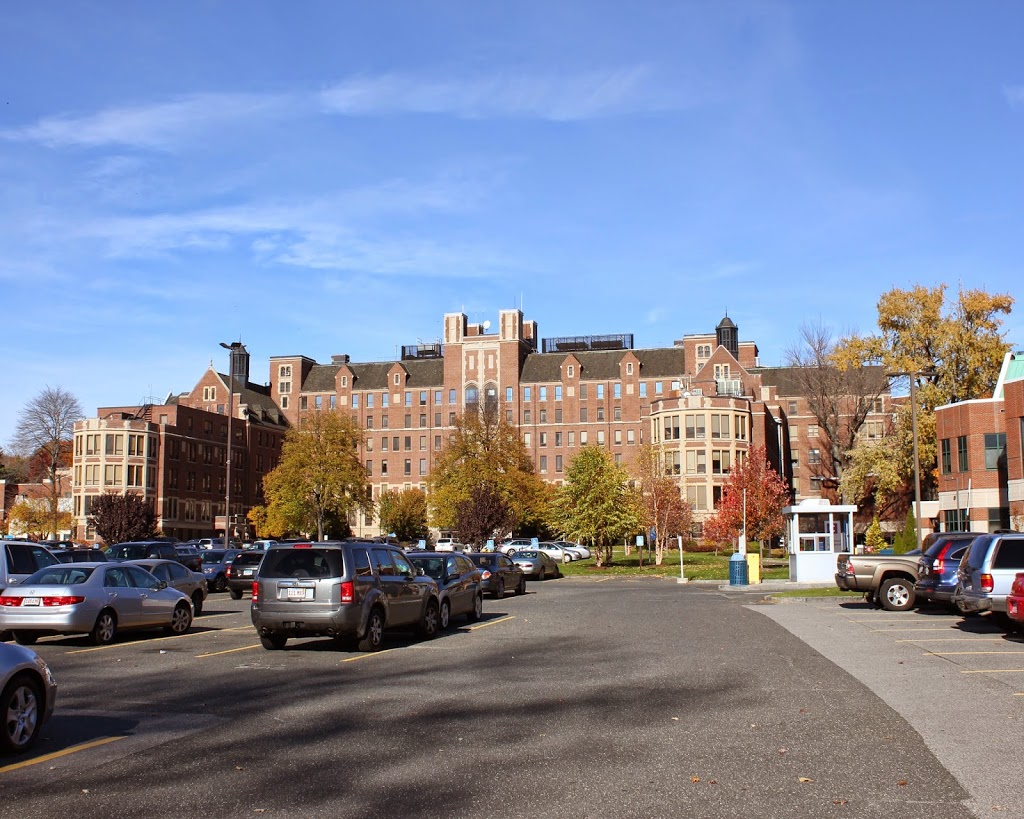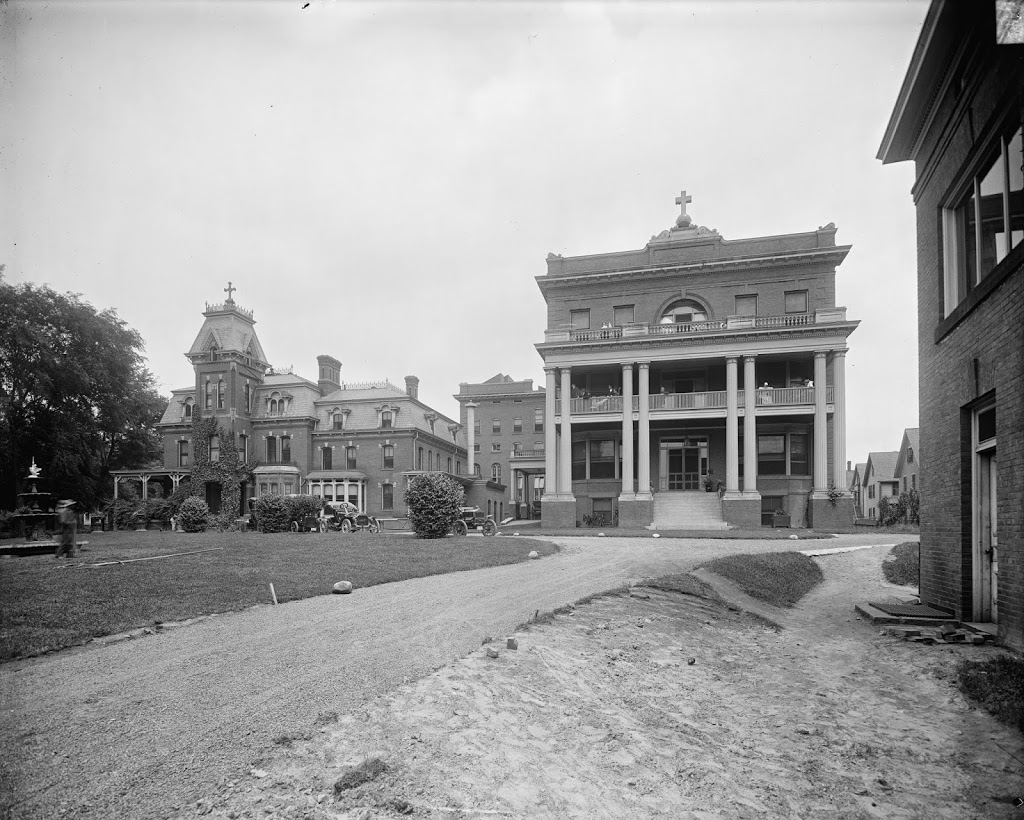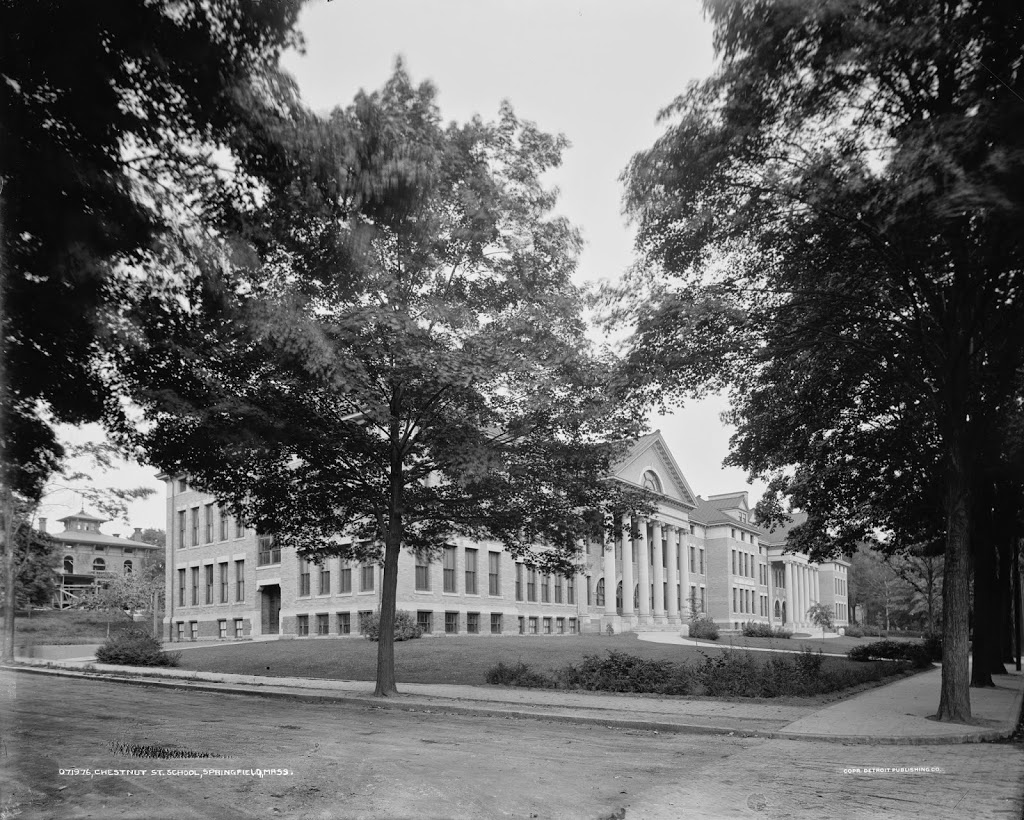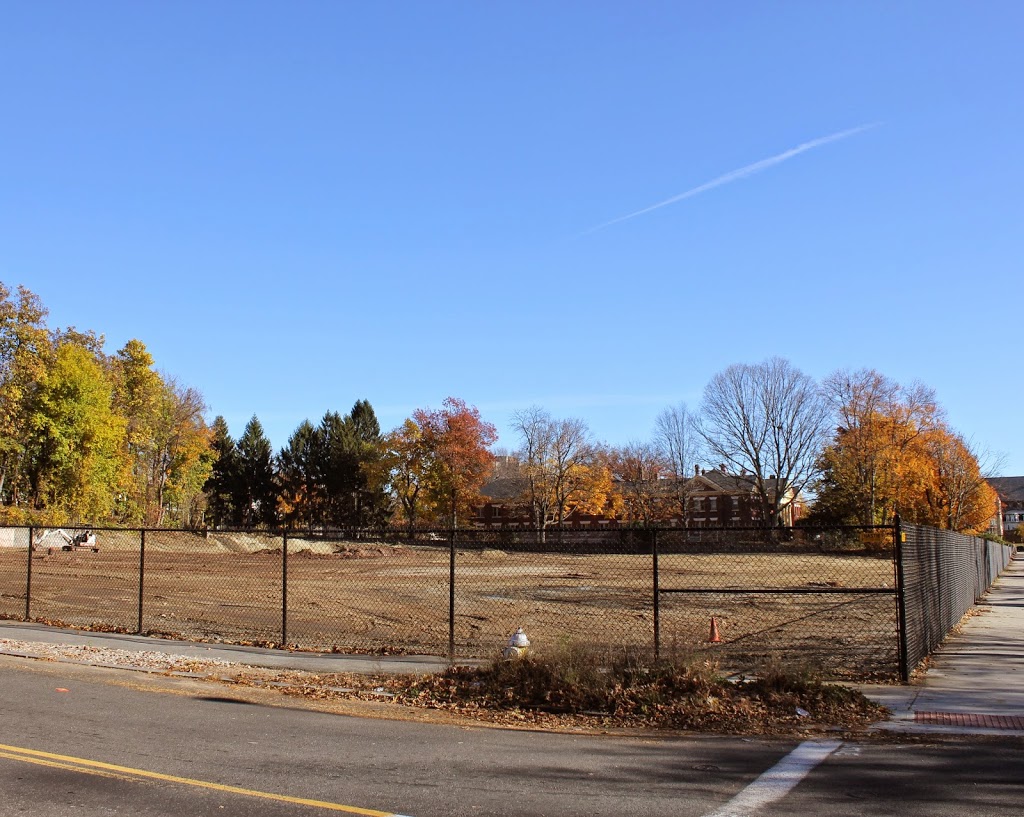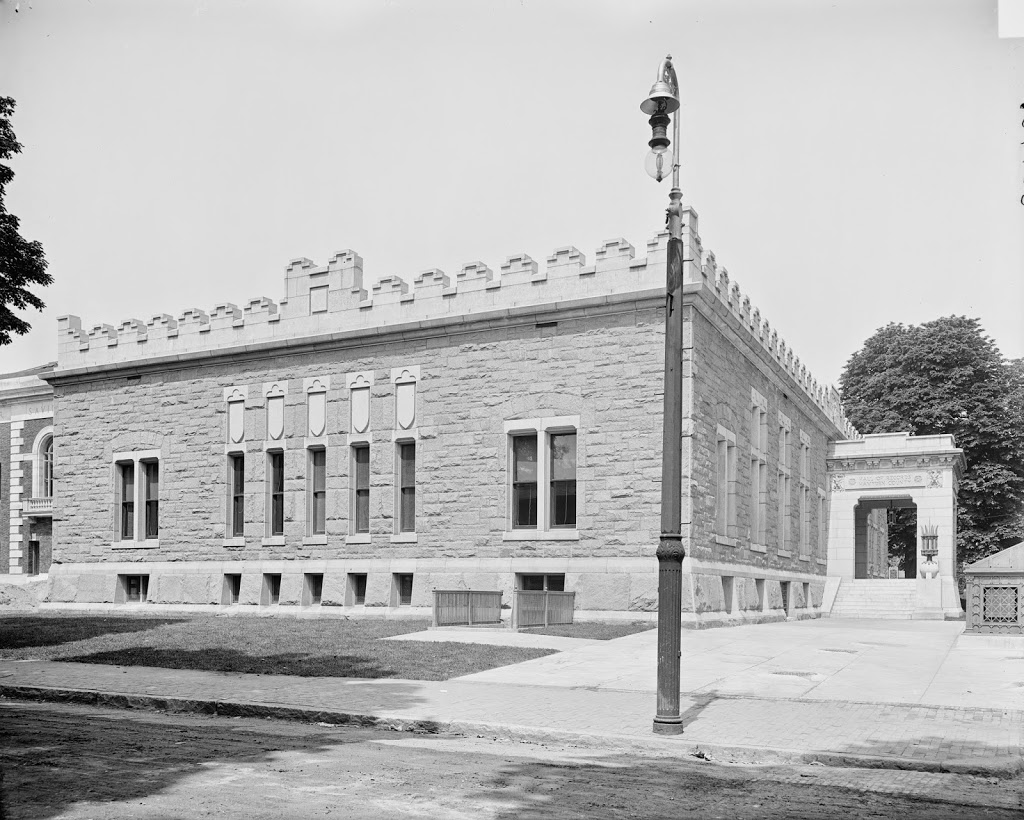The YWCA building on Howard Street in Springfield, around 1910. Photo from View Book of Springfield (1910).
The building in 2014:
The scene in 2023:
The building’s appearance hasn’t changed much over the past century, but its use has. It was built in 1907 as a residential building for the YWCA, after the organization moved from its old location a block away on Bliss Street. It continued to be used by the YWCA until at least the 1980s, but today it is the Western Massachusetts Correctional Alcohol Center, a minimum security facility for alcohol-related offenders. However, it probably won’t be for long – Howard Street is right in the middle of the planned casino development, so the days appear to be numbered for the historic building.
2023 update: The building was demolished soon after the second photo was taken, and the site is now part of the MGM Springfield casino. A replica of the building façade was incorporated into the casino design, although not in its original orientation, as shown in the third photo.

